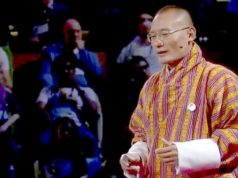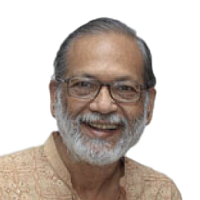For over two decades, Nepal, one of the poorest countries in the world, has generously hosted some 120,000 Bhutanese refugees. The predominantly Nepali-speaking Bhutanese identified as
Lhotshampas (southerners), were uprooted as a consequence of Bhutan’s ‘one nation, one people’ policy championed by the ruling elite of Ngalop ethnicity. Exodus of southern Bhutanese started in 1990 after a targeted census of 1988 aimed at cleansing Bhutan of the Nepali-speaking minority by denying them citizenship. Bhutan’s rulers perceived them as a political and social threat. India opted to protect its political and economic interest in Bhutan at the expense of the fleeing refugees’ fundamental rights. A recently re-democratised Nepal welcomed them with the political, technical and financial support from international humanitarian and developmental partners.
Inconclusive bilateral negotiations that began in 1993, and culminated in 2001 with a joint verification exercise, proved futile. From day one, Bhutan has denied the refugees’ Bhutanese citizenship and their right to return. Political instability and lack of a consistent state policy rendered Nepal incapable of winning the refugees’ right to return. Due to strategic short-sightedness, Nepal refrained from meaningfully engaging its expertise partner United Nations High Commissioner for Refugees (UNHCR), the UN refugee agency, in pursuing the most realistic durable solutions. Bhutan harboured extreme suspicion over UNHCR. Unsurprisingly, this adversely affected the refugees’ right to return home.
Resettlement programme
Seventeen years into the mutually opposing adamant positions of Nepal and Bhutan, the international community offered another solution—refugees’ resettlement to third countries. Through a process that started in 2007, over 106,000 Bhutanese refugees have been resettled mostly to the USA (85 percent) and seven other countries, as of November 2016.
As is common in protracted refugee situations, Nepal still has some 12,000 Bhutanese refugees unable to be resettled into a third country. Elderly refugees are understandably not willing to start a new life in countries and societies culturally alien to them. Others cannot leave behind their elderly who only want to return to Bhutan. Many others are in mixed-marriage situations, mostly with Nepalis, and are therefore unwilling to leave. Some others are disqualified for resettlement due to individual circumstances. A few others are opposed to resettlement since they view it as playing into Bhutan’s ethnic cleansing and diluting any prospect of restoring their rights as Bhutanese citizens.
Viable solution
The resettlement option is exhausted, with the process officially ending at the end of 2016. Returning home seems increasingly difficult, if not impossible. Hence, the only realistic solution is to integrate these refugees in Nepal. This will be possible only after Nepal abandons its tussle of political score-settling with Bhutan and ill-informed fear that integrating refugees is against national interest. Lacking a solution, these Bhutanese refugees remain stateless in Nepal.
In June 2016, Nepal’s indication of its openness to local integration if both third country resettlement and repatriation are also implemented was a mere political stunt, as repatriation is a next-to-impossible option due to Bhutan’s refusal. Only a comprehensive approach can deliver sustainable solutions, which are not mutually exclusive.
Over two decades, the Bhutanese refugees have integrated into Nepal de facto, where they share common religion, language and culture. The ground has matured for their legal integration into Nepal. Nepal can offer a permanent solution, helping resolve one of the world’s most protracted refugee problems. Political rhetoric against Bhutan and the 26-year old status quo have had far-reaching consequences on the refugees’ lives and are detrimental to Nepal’s global image as a generous humanitarian nation. Refugees’ right to a solution cannot be held hostage to political deadlocks.
As Nepal’s traditional donors are under unprecedented pressure to fund world’s other humanitarian crises, Nepal should not to take them for granted and expect their support to sustain the refugee programme forever. Donor fatigue looms large.
Nepal and the remaining Bhutanese refugees should come to terms with the fact that integration in Nepal is the only realistic resolution. Should Nepal demonstrate a credible will, its partners will be obliged to provide the necessary means to this end. Support would typically consist of multi-year and multi-sectoral developmental programmes enabling refugees to live a dignified life and to fulfil the host
communities’ developmental and environmental needs, thereby ensuring peaceful coexistence. Nepal missed an opportunity in 2013 by refusing a substantial proposal from the key stakeholders.
Legally and socially integrated refugees are an asset to the host society. A sound policy, comprehensive strategy and credible action plan are the keys to ensure donors’ support for refugee integration in
Nepal. Nepal could start by easing numerous restrictions on refugees that are detrimental to their right to a dignified life.
Nepal’s partners have extended solidarity by also resettling over 106,000 refugees. A 29-million strong generous host’s realistic approach can ensure the integration of 12,000 Bhutanese refugees in Nepal, benefitting both the refugees and Nepal.
Sapkota works for a UN agency



















